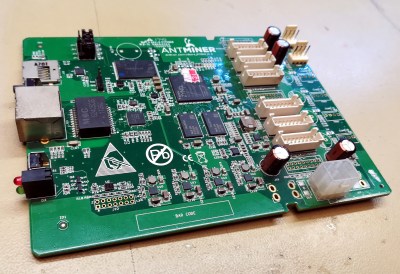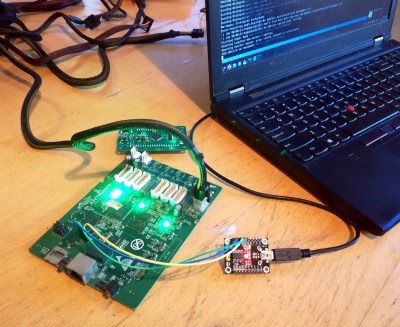Source: Hack a Day
One of the exciting trends in hardware availability is the inexorable move of FPGA boards and modules towards affordability. What was once an eye-watering price is now merely an expensive one, and no doubt in years to come will become a commodity. There’s still an affordability gap at the bottom of the market though, so spotting sub-$20 Xilinx Zynq boards on AliExpress that combine a Linux-capable ARM core and an FPGA on the same silicon is definitely something of great interest. A hackerspace community friend of mine ordered one, and yesterday it arrived in the usual anonymous package from China.
There’s a Catch, But It’s Only A Small One

There are two boards to be found for sale, one featuring the Zynq 7000 and the other the 7010, which the Xilinx product selector tells us both have the same ARM Cortex A9 cores and Artix-7 FPGA tech on board. The 7000 includes a single core with 23k logic cells, and there’s a dual-core with 28k on the 7010. It was the latter that my friend had ordered.
So there’s the good news, but there has to be a catch, right? True, but it’s not an insurmountable one. These aren’t new products, instead they’re the controller boards for an older generation of AntMiner cryptocurrency mining rigs. The components have 2017 date codes, so they’ve spent the last three years hooked up to a brace of ASIC or GPU boards in a mining data centre somewhere. The ever-changing pace of cryptocurrency tech means that they’re now redundant, and we’re the lucky beneficiaries via the surplus market.
Getting To The Linux Shell Is This Easy!

On the PCB is the Zynq chip in a hefty BGA with its I/O lines brought out to a row of sockets for the miner boards, Ethernet, an SD card slot, a few LEDs and buttons, and an ATX 12V power socket. The serial and JTAG ports are easily identifiable and readily accessible, and connecting a USB-to-serial adapter to the former brought us to a Linux login prompt. A little bootloader shell wizardry allowed the password to be reset, and there we were with a usable shell on the thing. Changing a jumper allows booting from the SD card, so it would be extremely straightforward to bring your own ARM Linux build onto the device to replace the AntMiner one, and since the Zynq can load its FPGA code from within Linux this makes for an extremely accessible FPGA dev board for the price.
These boards seem to be offered by multiple vendors, which indicates that there must be quite a few in the supply chain. Stocks will inevitably run out though so don’t despair if you fail to snag one. Instead they are indicative of a growing trend of application specific FPGA boards being reimagined as general purpose dev boards by our community (for example the Lattice FPGA in a hackable LED driver board we featured back in January). It’s a fair certainty that they’ll be joined by others as their generation of FPGA tech starts to be replaced.
We’ll be keeping our eye out for any others and we’re sure you’ll drop us a tip if you see any.

